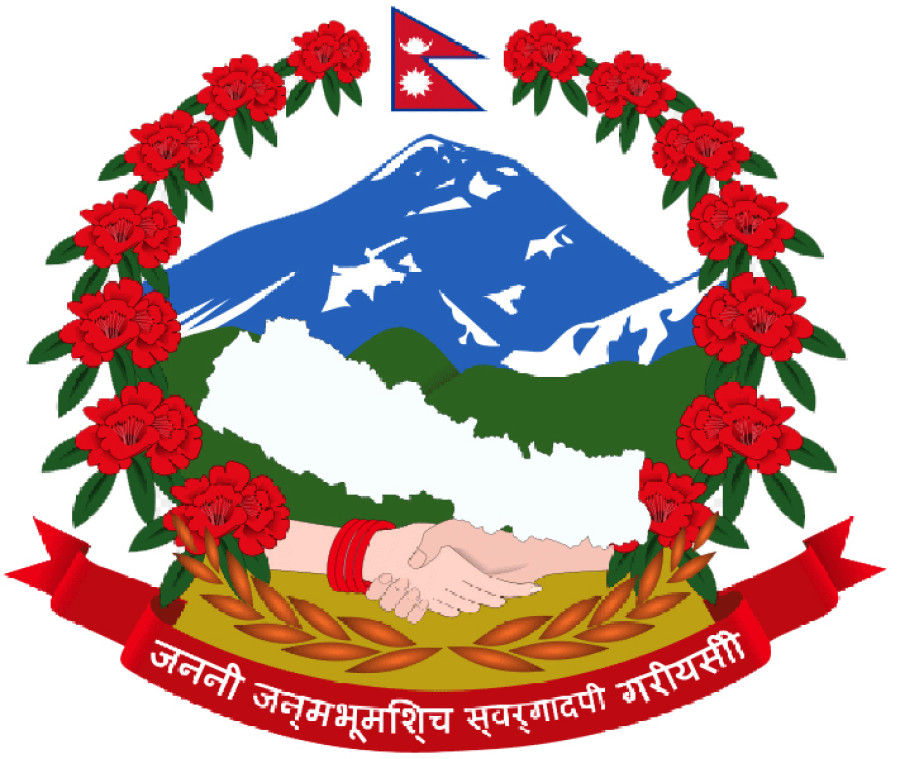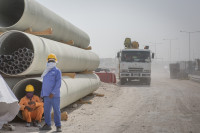Opinion
Divine motherland
Some 60 million years ago, the Himalayan orogeny took place bestowing Nepal with the highest mountain range in the world. Nepal has also been gifted with a stirring history, culture, religion, majestic beauty, and diverse castes and ethnicities.
Niranjan Mani Dixit
Some 60 million years ago, the Himalayan orogeny took place bestowing Nepal with the highest mountain range in the world. Nepal has also been gifted with a stirring history, culture, religion, majestic beauty, and diverse castes and ethnicities. From the first democratic movement in 1951, the country has witnessed many trials and errors related to political, socio-economic, structural and systemic changes; these instances are yet to bear fruit. In a reckless drive to attain self-containment and with the absence of true glorification of the motherland, haughty minds often tend to overlook the significance of the values by which this country functions, the values that were established with great sacrifice by national heroes. Political instability, economic downturn, corruption, lack of good governance, poor service delivery and foreign interference in domestic matters could be a result of diminishing regard and obligation towards the well-being of our divine motherland.
Religious riches
A review of Nepal’s rich history from the earliest period—going back approximately 11,000 years based on the Neolithic tools discovered in Kathmandu—to medieval and modern times, reveals a number of powerful patriotic leaders and national heroes. A great majority of Nepalis are Hindus, and the hallmark of the Hindu religion has been to adore and worship the motherland with devotion and dutiful action to deliver positive results.
The Vedas and Puranas proclaim the glory and greatness of the divine motherland. In the epic ‘Ramayana’, Lord Ram said to his brother Lakshmana after their victory over the demon king Ravana, “Mother and motherland are greater and more sacred than heaven.” This saying is emblazoned on the red banner of Nepal’s national emblem, but this belief does not seem to be adhered to in actual practice. The ‘Ramayana’ was written at the Valmiki hermitage which was located on the banks of the Narayani River near Tribeni in Nepal. Goddess Mother Sita, wife of Lord Ram, was born in Janakpur in Nepal; and her father, King Janak, was a renowned patron of Vedic culture and philosophy. Likewise, Buddha was born in Lumbini in Nepal. Byas Cave in Nepal is where the sage Byas, son of the great sage Parasar, lived and wrote the largest epic ‘Mahabharata’ as mentioned in the Skanda Puran.
Notable leaders
Among the prominent national heroes of the modern age, there are two who are the most admired: King Prithvi Narayan Shah (1723-75), the ninth-generation descendant of Drabya Shah, who established the Gorkha Kingdom; and King Tribhuvan Bir Bikram Shah (1906-55), who took a huge risk and terminated the 104-year-old Rana rule of hegemony, debauchery and economic exploitation to introduce multiparty democracy for the first time in Nepal.
King Prithvi Narayan Shah unified small principalities including diverse ethno-religious groups into the mighty Gorkha Kingdom and paved the path to prosperity. The Gorkha Kingdom later became known as Nepal. He said to his successors, “It is with much travail that I have acquired this kingdom. It is a common garden for all castes and ethnicities. Let everyone realize this.” He also proffered Divine Counsel dealing with geo-political vulnerability. His use of the imagery ‘a yam between two boulders’ in Nepal’s geopolitical context formed the principal guideline for the country’s foreign policy of non-alignment and peaceful coexistence.
His financial policy was incredibly sound. He patronised indigenous industries and opposed free trade. He favoured a democratic pattern in appointing ministers saying, “Ministers should be appointed according to the will of the people. Corrupt officials and those who take bribes and give bribes are the number one enemy of the development of the country. Justice is crippled when bribes are given and when bribes are taken. Let the king see that great justice is done. Let there be no injustice in our country.” He also provided directions to the governing elite on how to pursue governance, nationalism and foreign policy in order to sustain the country, which are relevant even now.
Long-standing political issues
Nepal has been stumbling through continuous political turbulence since 1960 when King Mahendra dismissed multiparty democracy. This was followed by King Birendra’s 29-year rule and a hands-off leadership management mode which ended with the royal massacre on June 1, 2001. Then there was the decade-long Maoist conflict; and on February 1, 2005, King Gyanendra dismissed the entire government and assumed full executive powers. The subsequent decade-long transition period turned Nepal into a secular federal republic in December 2007, and a political standoff loaded with contentious issues has prevailed since then.
Healing the Nepalis’ motherland is overdue. Jingoists, nationalists, and social and political leaders possessing the qualities of statesmen should come together in solidarity. To help this process, perhaps the time has come for astute and daring non-resident Nepalis (NRNs)—those working in the Gulf and other Asian countries, and even those serving in the armies of foreign countries—to return and join hands in the task of healing and rejuvenating the divine motherland Nepal where they were born and grew up. Let us take inspiration from this quote from John F Kennedy, “Ask not what your country can do for you, ask what you can do for your country.”
- Dixit is an expert in integrated development issues




 19.12°C Kathmandu
19.12°C Kathmandu










%20(1).jpg&w=300&height=200)

